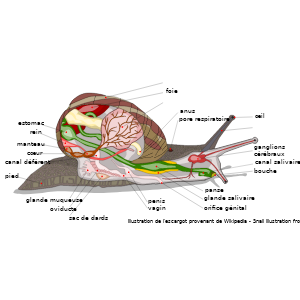Introduction
Garden snails, known scientifically as Cornu aspersum, are fascinating creatures with a unique reproductive system. Understanding how garden snails reproduce not only sheds light on their life cycle but also helps gardeners manage their populations effectively. This article explores the intricacies of snail reproduction, covering their mating behaviors, hermaphroditic nature, egg-laying process, and factors influencing their reproduction. Whether you’re a gardening enthusiast or a biology student, this guide provides expert insights and practical information backed by research.
How Do Garden Snails Reproduce?
Hermaphroditic Reproduction Explained
Garden snails are hermaphrodites, meaning each individual possesses both male and female reproductive organs. This unique feature allows them to perform both roles during mating, increasing reproductive success. Despite having both sets of organs, snails typically mate with another individual to exchange sperm, promoting genetic diversity.
The Mating Process
Mating usually occurs during warm, humid conditions to protect delicate tissues. Snails engage in a complex courtship that can last several hours, involving:
- Touching and circling each other
- Exchanging mucus trails
- Using a specialized structure called a “love dart,” which increases fertilization chances by delivering hormones
This elaborate behavior ensures successful sperm exchange and fertilization.
Egg Laying and Development
Where and How Snails Lay Eggs
After mating, garden snails lay eggs in moist, sheltered environments such as under leaves, soil, or mulch. Each clutch can contain between 30 to 120 eggs, depending on the snail’s size and health.
Incubation and Hatching
Eggs typically incubate for 2 to 4 weeks. Temperature and humidity significantly affect development speed; warmer and moist conditions accelerate hatching. Newly hatched snails are miniature versions of adults and begin feeding on soft plants immediately.
Factors Affecting Garden Snail Reproduction
Environmental Influences
- Temperature: Optimal reproductive activity occurs between 15°C and 25°C (59°F to 77°F).
- Humidity: High humidity is essential for mating and egg survival.
- Food Availability: Adequate nutrition supports energy-intensive reproductive processes.
Human Impact and Control
Gardeners often seek to control snail populations due to their feeding habits. Understanding reproduction helps in timing control measures effectively, such as:
- Removing egg clusters
- Reducing moisture and hiding spots
- Using barriers or natural predators
Interesting Facts About Garden Snail Reproduction
- Garden snails can store sperm from multiple mates for months, fertilizing their eggs over time.
- The love dart is made of calcium carbonate and is unique to certain snail species.
- Snail reproduction rates can lead to rapid population growth under ideal conditions, making management crucial.
Conclusion
Garden snails reproduce through a fascinating hermaphroditic process involving intricate mating behaviors and strategic egg-laying. Their reproductive success depends heavily on environmental conditions like temperature and humidity. For gardeners, understanding these factors is key to managing snail populations effectively. By appreciating the complex biology of garden snails, we gain insight into their role in ecosystems and how best to coexist or control them. Next time you spot a garden snail, consider the remarkable reproductive journey it undertakes beneath the surface.
